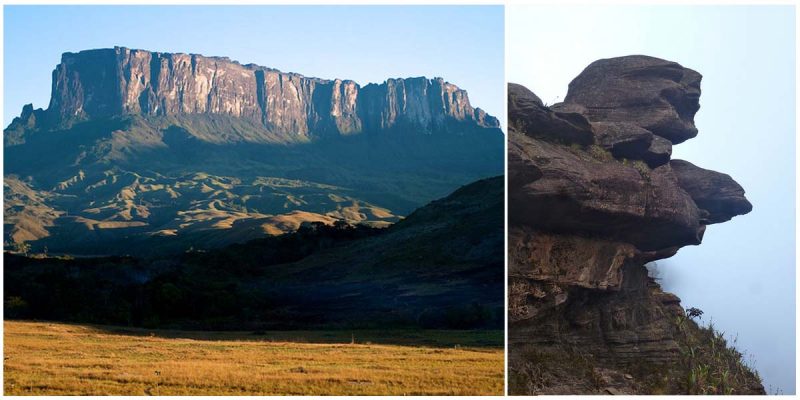Mount Roraima is the highest mountain of the Pakaraima chain of tepui plateaus in South America. Also known as Tepuy Roraima and Cerro Roraima, it serves as the triple border point of Venezuela, Guyana and Brazil. Bounded on all sides by cliffs rising 400 meters, the mountain was first described by the English explorer Sir Walter Raleigh during his expedition in 1595.
It lies on the Guiana Shield in the southeastern corner of Venezuela’s 30,000-square-kilometre Canaima National Park, forming the highest peak of Guyana’s Highland Range.
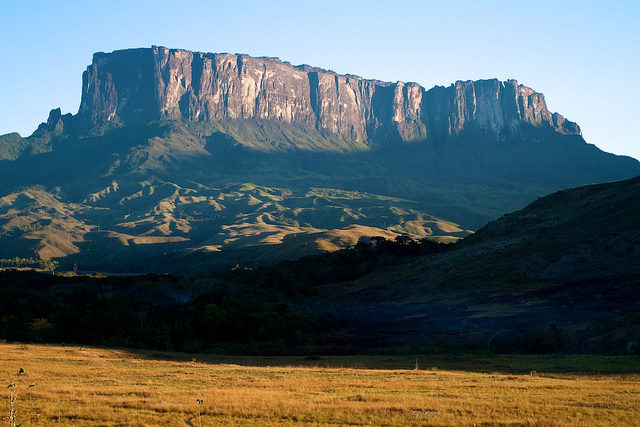
The tabletop mountains of Roraima are considered to be the oldest geological formations on Earth, dating back to some two billion years ago in the Precambrian era.
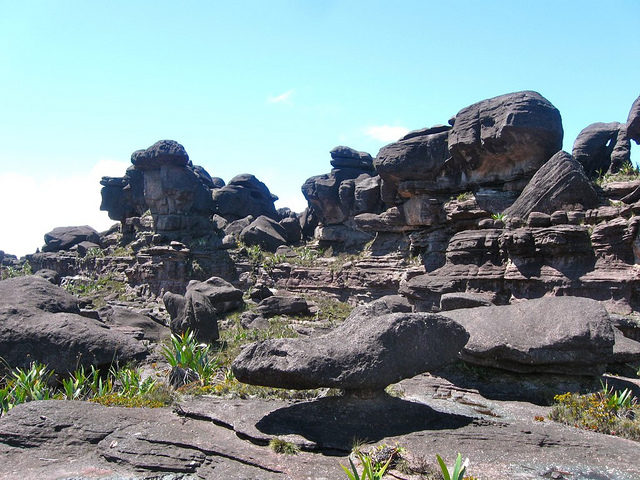
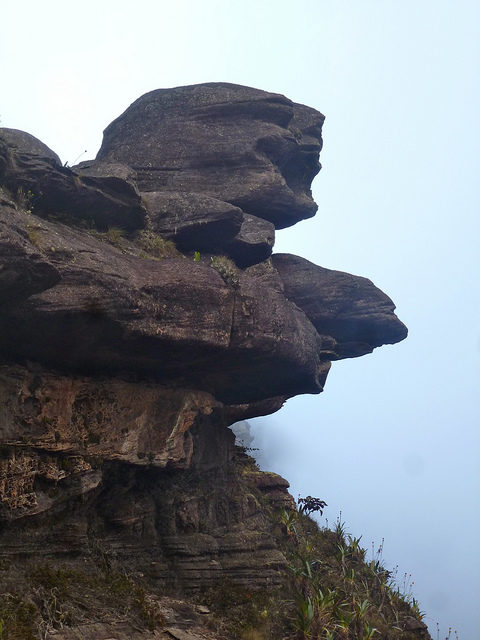
The mountain was a special place for the indigenous people of the region long before the arrival of European explorers. This magnificent site is central to many of their myths and legends.
Natives of the Gran Sabana (the Pemon and Kapon) see Roraima as the stump of a mighty tree that in the past held all the fruits and tuberous vegetables in the world. They believed that the tree was cut down by Makunaima, their mythical trickster, and crashed to the ground, unleashing a terrible flood.
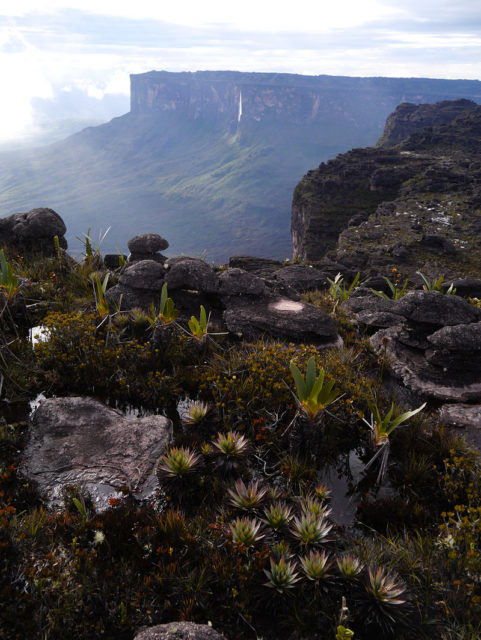
These beliefs come from the unique plants found on Roraima’s summit. Plants such as pitcher plants, Campanula, and the rare Rapatea heather are commonly found in the escarpment and summit. There are only a few bushes, and almost the entire surface of the summit is bare sandstone.
Most of the nutrients that are present in the soil are washed away by torrents that cascade over the edge, forming some of the highest waterfalls in the world.
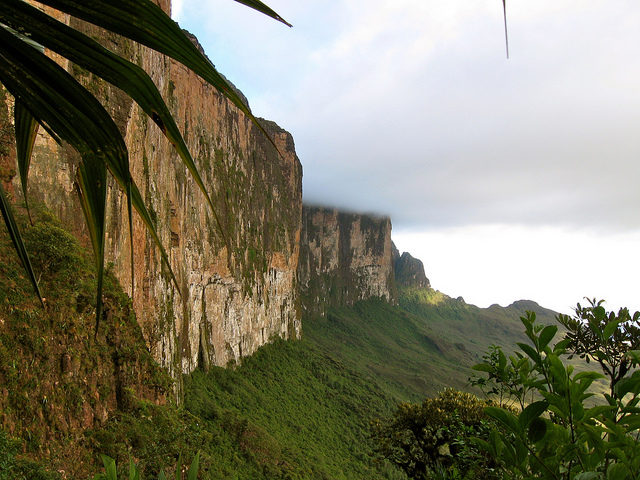
Atop Mount Roraima, multiple examples of unique fauna can be found. One of them is the Roraima Bush Toad, currently listed as a vulnerable species. There is a need for greater education among tourists to make them aware of the importance of not handling these animals in the wild.
The unique species are protected in Monumento Natural Los Tepuis in Venezuela and Parque National Monte Roraima in Brazil.
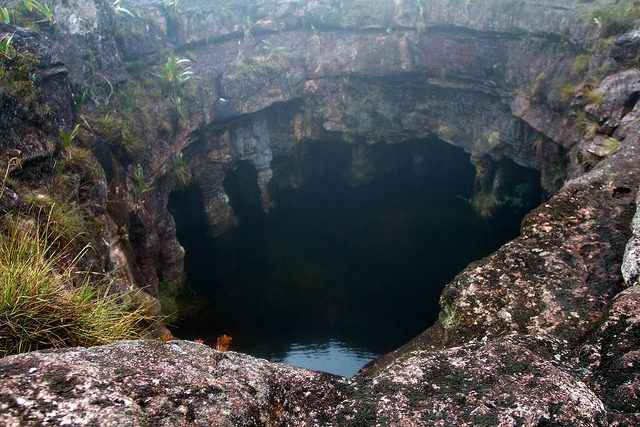
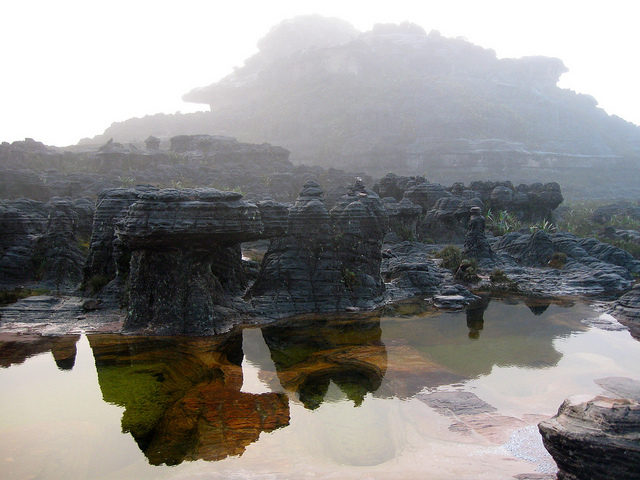
Mount Roraima was the first major tepui to be climbed. In December 1884, Sir Edvard im Thurn walked up a forester ramp to scale the plateau, and this is the same route hikers take today. The only nontechnical route to the top is the Paraitepui route from Venezuela; any other approach will involve climbing gear.
In Brazil, the Monte Roraima National Park lies within the Raposa Serra do Sol Indigenous Territory and is not open to the public without permission. In 2010, a new route was opened by Brazilian climbers Eliseu Frechou, Fernando Leal, and Marcio Bruno named the Guerra de Luz e Trevas.
